Identify fungi on the go
Discover fungi when you're out and about with your own pocket-sized identification guide to the UK's common species.
Buy it now
Digital content editor
Don't let the UK's short days and cold, damp weather put you off. Go foraging for a winter treat this November and December with these edible wild plants and mushrooms.
The transition from autumn to winter brings a range of foraging opportunities in our woodlands. You might expect to only find nuts and seeds but look out for mushrooms too, as well as tasty fruits and berries. Here’s a short guide to our favourite winter edibles.
Remember to follow our sustainable foraging guidelines, including only picking from plentiful sources and only foraging what you can identify with certainty. A good tip is to always take a reliable field guide with you.
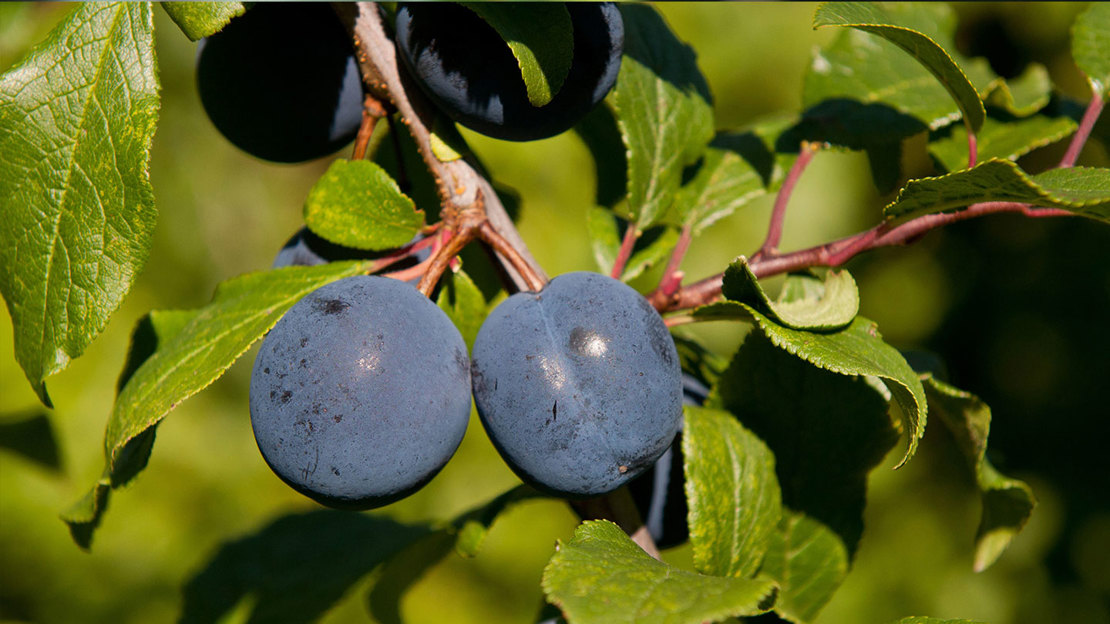
Bullace is a wild variety of plum similar to damsons, found in hedges, parks and woodlands. In some years hedgerows can be straining from the weight of bullace fruits, as they often produce very large crops.
Bullace tends to taste acidic until ripe. Once the stones are removed the fruit can be used to make crumbles, jams and preserves, or a delicious plum streusel cake. Bullace can also be made into a fruit wine or a fruit liqueur, similar to sloe gin.
These small, oval fruits can vary in colour but are usually blue, purple or black. Bullace is a great late-season foraging fruit as it ripens up to six weeks later than many other varieties, peaking in October to November.
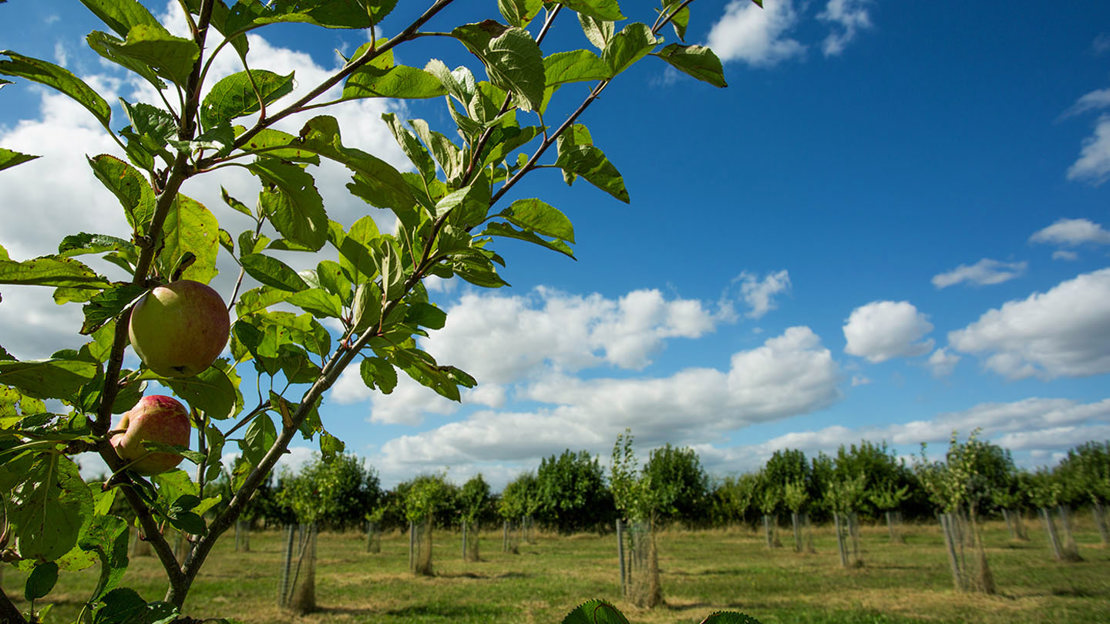
As the ancestor of the cultivated apple, crab apples have been eaten since ancient times. While they tend to ripen through summer and autumn, early winter is the best time to pick crab apples as the cold temperatures soften them up and inject a sweet flavour.
Crab apple jelly is a classic recipe for this fruit, as the high levels of pectin found in the apples make them great for helping jams and jellies set. They can also be used to make alcohols such as fruit liqueur or cider, or for a sweet treat why not try making fun-size toffee crab apples?
Look for crab apple trees in parks, hedgerows and woodland. The apples are generally green but may take on a reddish-pinkish hue as they ripen, at which point they will twist off easily from the stem. Crab apples rarely rot on the tree, so it’s possible to forage for them right through the winter.
Discover fungi when you're out and about with your own pocket-sized identification guide to the UK's common species.
Buy it now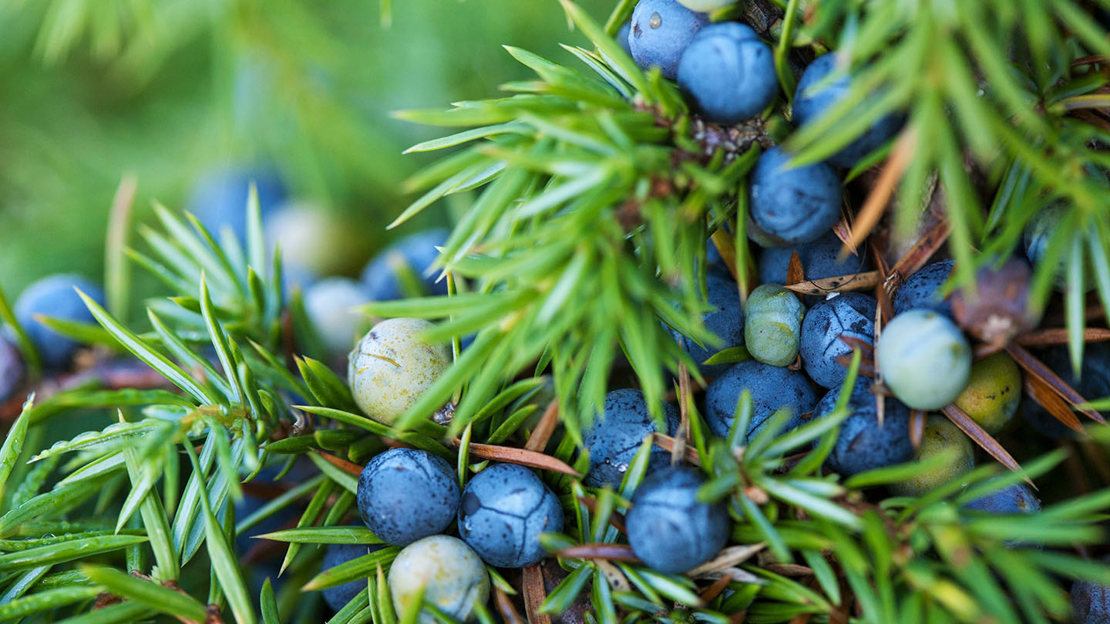
Juniper is one of Britain’s few native conifers and is renowned for its role in flavouring gin. The ‘berries’ are actually not berries at all, as they develop from seed cones rather than flowers.
Juniper berries can be crushed and finely chopped, then added to sauces or marinades to imbue flavour that goes particularly well with meats such as pork or venison. The berries can also be combined with other fruits to make fruitcake, or can be dried and infused as a herbal tea.
The best time to gather juniper berries is from September to December, when the berries turn from green to a dark blue or purple. Look for the shrubs on chalk lowland, rocky areas and native pinewoods, particularly in western Scotland or areas such as the Chilterns.
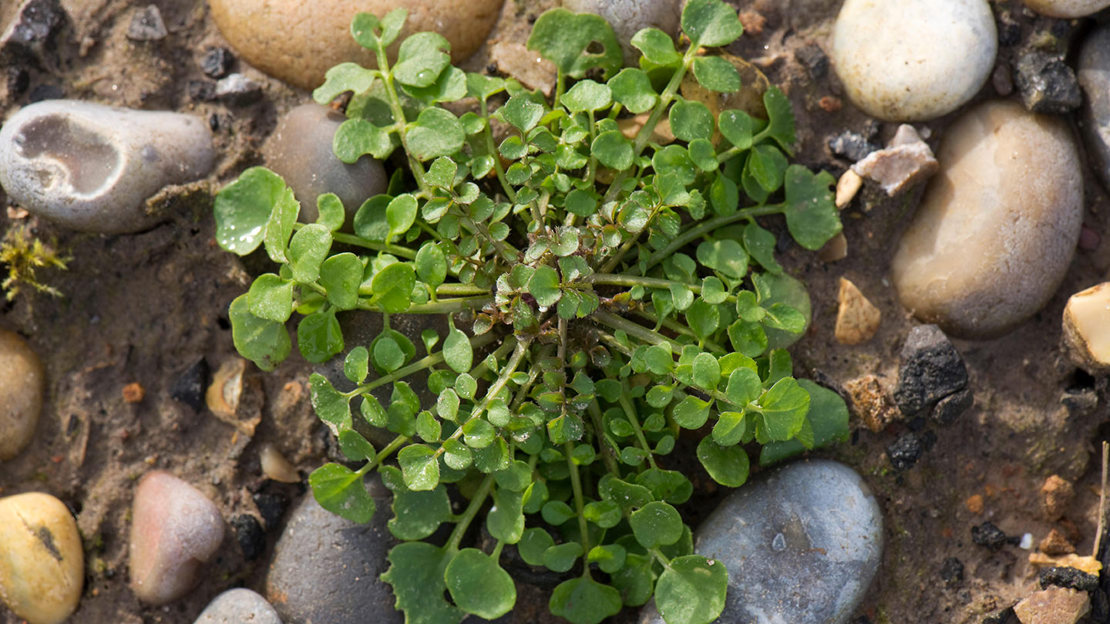
A common annual plant with rounded leaves, hairy bittercress is considered by most gardeners to be a weed but is actually an edible herb with a punchy taste. It can grow through the winter, though usually stays in a compact rosette form close to the ground.
Pick leaves from the middle of the rosette and wash well to get rid of any dust or grit. The leaves have a lovely peppery, tangy flavour and go well in winter salads, especially when mixed with goat's cheese and beetroot. Hairy bittercress can also be added to soups, salsa and pesto.
In winter, you'll often find this herb growing on bare soil in flower beds and vegetable patches. It likes damp, shaded areas, so will also grow amongst pavement cracks and dry stone walls.
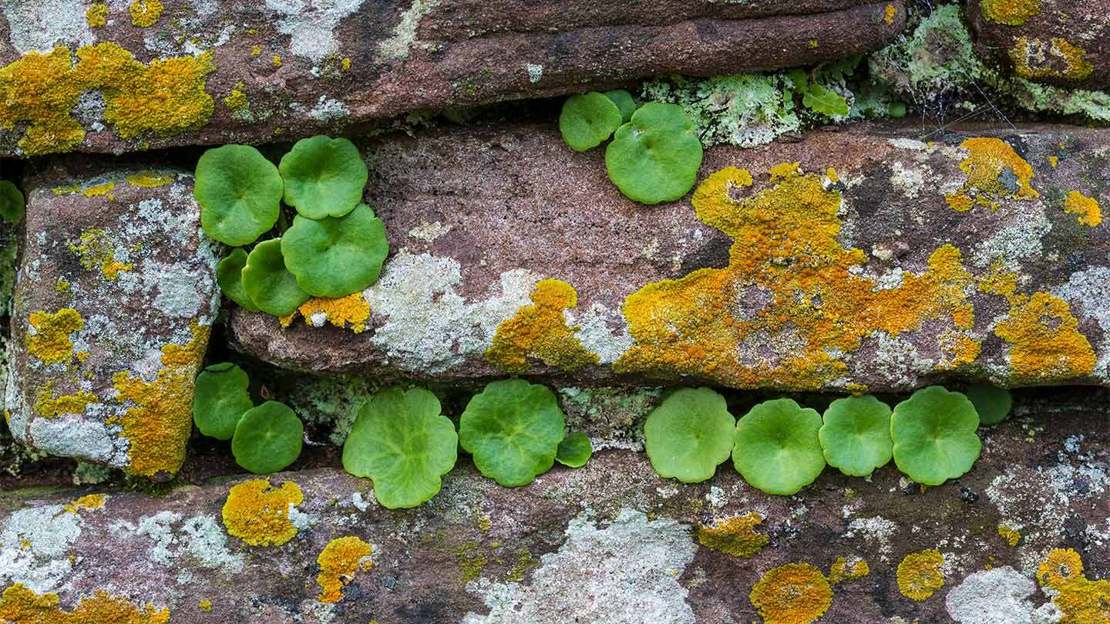
Also known as pennywort, this low-growing perennial produces fleshy, edible leaves that have been shown to have anti-inflammatory properties, making them useful for treating wounds. Winter is a good time to collect navelwort leaves as they are usually less bitter than at other times of the year.
The succulent leaves of navelwort have a crunchy texture, a bit like cucumber, that makes them a good addition to salads or sandwiches. They are best washed and eaten raw.
Navelwort heavily favours western parts of the UK and is much less common in the east. Look for it in wall crevices and other rocky areas, and take care not to dislodge the entire plant when gathering leaves.
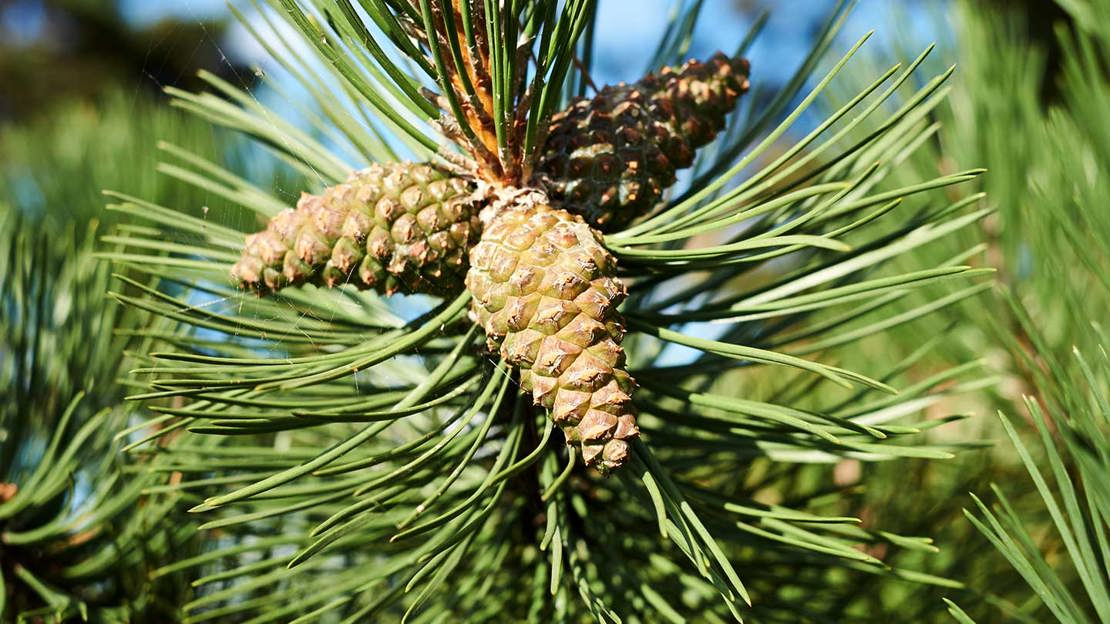
Given their evergreen nature, pine trees are excellent for winter foraging. Both the needles and the seeds of several pine species are edible.
Collect the needles and the seeds. A tea extracted from pine needles is high in vitamin C, making it a great anti-cold remedy. It also contains vitamin A and beta-carotene. Seeds can be dislodged from open pine cones by shaking them. They can be eaten raw but are usually roasted or toasted.
Look for young trees as these are easier to harvest pine needles from. Make absolutely sure that you don’t accidentally harvest the needles from yew, as these are toxic.
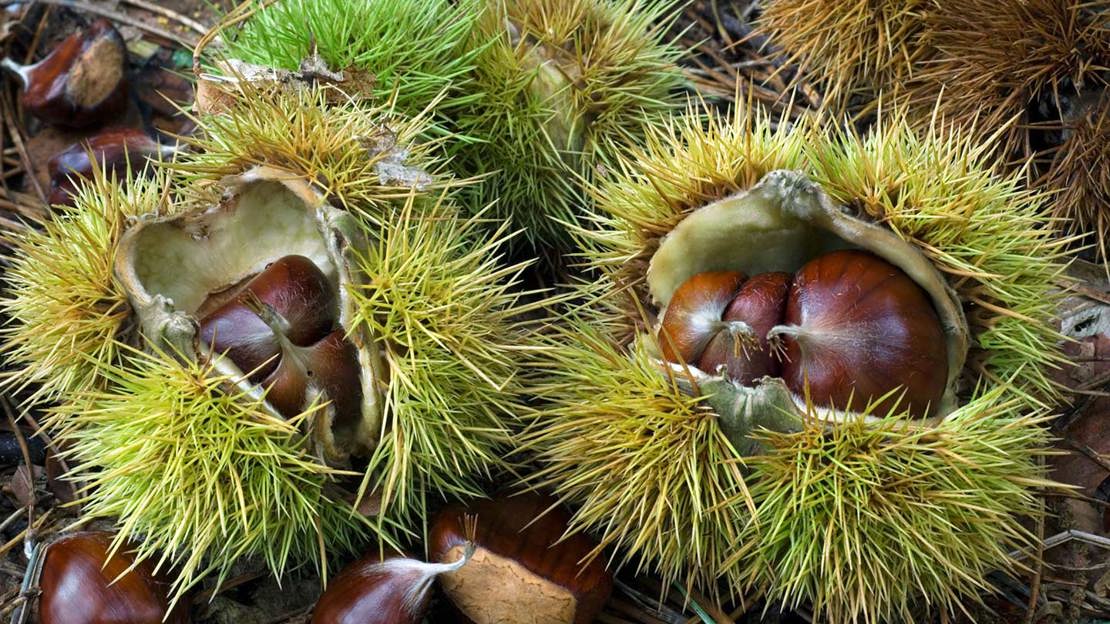
A Christmas classic and a foraging favourite as the winter months arrive, sweet chestnut trees were introduced to the UK by the Romans.
The nuts can be baked, boiled, microwaved or, for the authentic festive experience, roasted. Just remember to score a cross in them to stop them from exploding when heated. Once cooked and peeled they can be eaten as they are or used in desserts and stuffings. You can also candy them, puree them or store them in syrup.
You’ll find the best crop at the foot of large established trees. Trees start dropping nuts from October and will do so into late autumn and early winter.
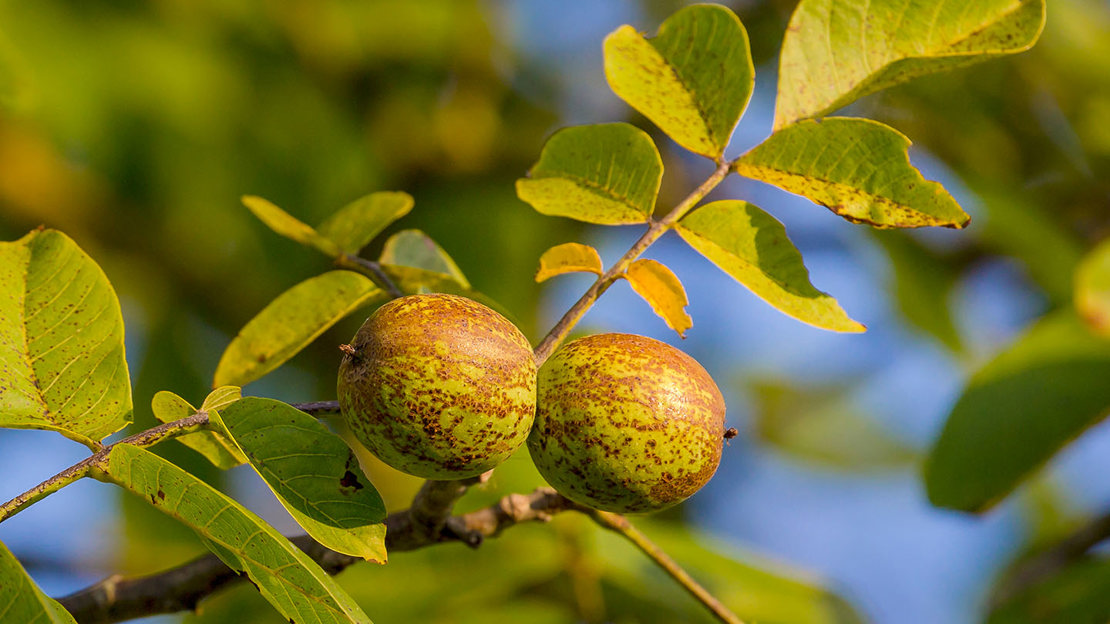
Walnut trees were first introduced to the UK by the Romans, who were very fond of the nuts. The edible fruits that harbour the nuts first appear in summer and linger late into the autumn, making them great for November foraging.
Walnuts can add delicious nutty flavour to many sweet and savoury dishes including cakes, salads and pestos. They combine rather well with apples or goat’s cheese. For a quick snack they can be eaten raw, or they can be candied or coated in chocolate for something sweeter.
As an ornamental tree, you’re most likely to find walnuts in parks and gardens. The browning of the fruit as it begins to rot away is a sure sign the nuts have ripened – just be aware when collecting them that the juice from the fruit can leave long-lasting stains on skin or materials.
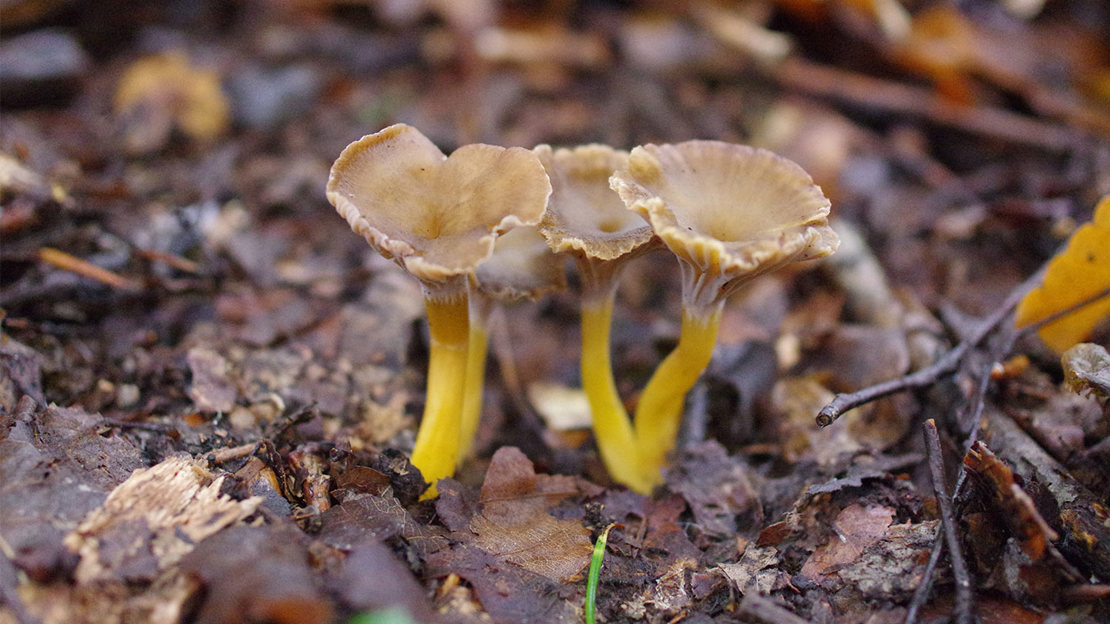
The trumpet chanterelle is an edible mushroom that is often known as a winter chanterelle due to its abundance in the cooler months of the year. That name is slightly misleading though, as trumpet chanterelles are most common from September to December and usually won’t persist after a few heavy frosts.
Trumpet chanterelles are said to have a mild earthy flavour and can be cooked in the same way you would prepare store-bought mushrooms, for use in stews, casseroles or pies. They can also be pickled or caramelised, and can be dried in a warm oven for long-term storage.
Often found in large groups, trumpet chanterelles like damp, mossy forests, particularly coniferous ones. They have thin brown caps with wavy edges, yellowish stems that reach 2-8cm tall and veined gills beneath the caps. Trumpet chanterelles do not have poisonous lookalikes but can be confused with the false chanterelle (Hygrophoropsis aurantiaca), which is considered inedible.
Discover fungi when you're out and about with your own pocket-sized identification guide to the UK's common species.
Buy it now